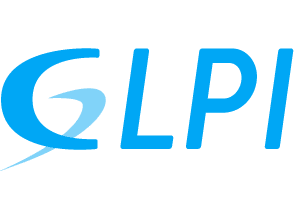Since GLPI 10, we have added three new tools for companies willing to manage and keep track of security and investments on IT assets like computers, servers, monitors, printers and, software programs, for example.
Companies of various sizes must manage the assets, so they might plan correctly the lifecycle of purchase, usage, maintenance and/or disposal correctly and effectively. Imagine if an IT department can keep track of the number of computers or monitors there are to be fixed and how many should be bought the next year.
Native GLPI Inventory
The native inventory is the fundamental functionality at the heart of GLPI. It acts as a central hub for managing and tracking IT assets, covering everything from hardware and software to user accounts and basic inventory information.
You will always start here. The native inventory serves as the foundation, addressing basic inventory needs like tracking the number of computers that need attention or planning for new hardware acquisitions.
The GLPI Native Inventory lays the groundwork, providing the essential structure for all things asset management in GLPI.
GLPI Inventory Plugin
Think of the plugin as an extension that enhances GLPI’s inventory capabilities. It steps in when you require more advanced features such as detailed hardware and software information, network discovery, and robust reporting – ideal for medium to large organizations with complex IT infrastructure.
You will deploy the plugin when your IT landscape becomes intricate, demanding network discoveries, scheduled tasks, SNMP inventory, or software deployment. It’s the toolkit for handling the complexities of a dynamic IT environment.
The GLPI Inventory plugin expands GLPI’s functionality, introducing advanced features and additional capabilities beyond the native inventory.
GLPI Agent Toolbox
The GLPI Agent toolbox introduces an agent software deployed on client devices to collect detailed information. It serves two primary purposes: replacing certain GLPI Inventory plugin features like network discovery and inventory support via scheduled tasks, and providing real-time data from devices in challenging network environments.
You will turn to the toolbox when you need to supplement or replace features provided by the GLPI Inventory Plugin, particularly in scenarios where direct GLPI access is restricted, such as strongly segmented DMZs or isolated VLANs. It’s your go-to for detailed, real-time information and proactive monitoring.
The toolbox offers more reliable inventory data, more tools to manage inventory tasks, reduces manual data entry, facilitates proactive monitoring, supports remote inventory and tasks in isolated or secured network environments.
When to Choose
The native inventory is the cornerstone, always part of your GLPI infrastructure. The GLPI Inventory Plugin and GLPI Agent Toolbox are able to extend some GLPI’s capabilities to address advanced tasks, such as network discovery and inventory in segmented DMZs and VLANs, and provide solutions for restricted or challenging network environments.
Your choice depends on your organization’s specific requirements, the complexity of your IT infrastructure, and the need for enhanced features that go beyond the native inventory’s capabilities.
Useful Links
- Discover native GLPI inventory – GLPI Project (glpi-project.org)
- Unlocking Efficient Network Inventory Management with the GLPI Agent Toolbox Plugin – GLPI Project (glpi-project.org)
- GLPI Agent documentation — GLPI Agent 1.6 documentation (glpi-agent.readthedocs.io)
- Discover assets management – FAQ (teclib.com)
- Assets — Documentation GLPI 10.0 (glpi-user-documentation.readthedocs.io)
Video content:
00:00 – GLPI Inventory, Plugin, and Agent Toolbox
00:28 – Native GLPI Inventory Features
04:40 – New Types of Assets
06:20 – GLPI Partial Inventory
08:34 – Pictures in Assets
09:45 – GLPI Inventory Plugin
11:39 – GLPI Agent Toolbox
15:02 – Which one should you choose?
